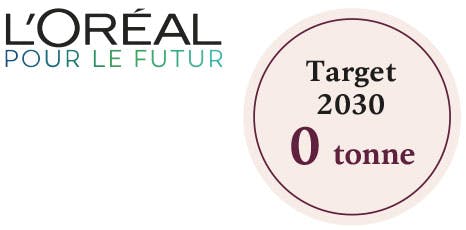These results are primarily linked to the effects of the Covid-19 health crisis, which led to the complete or partial closure of several sites around the world, resulting in a decrease in hours worked on-site by 54% compared to 2019 (a 13% decrease from 2020). This difference between the decrease in hours worked on-site and waste generation is primarily due to the nature of activities that continued on the sites (laboratories, pilots, etc.), which are waste-generating.
| Administrative sites and research centers | Industrial sites | |||
|---|---|---|---|---|
| 2020 | 2021 | 2020 | 2021 | |
| Transportable waste excluding returnable packaging in rotation with returnable packaging at the source (in tonnes) | 4,251 | 4,501 | 85,389 | 94,175 ☑ |
| Returnable packaging in rotation (in tonnes) (1) | 0.104 | 0.164 | 18,340 | 19,718 ☑ |
| Total recovered (in tonnes) | 3,838 | 4,022 | 98,905 | 109,695 ☑ |
| Recovery index (%) | 94 | 92 | 96 | 97 ☑ |
| Total recovered material (tonnes) | 2,001 | 2,097 | 59,665 | 66,195 ☑ |
| Material recovery index (%) | 49 | 48 | 58 | 59 ☑ |
☑ The Statutory Auditors have expressed reasonable assurance with regard to this indicator.
In addition to tracking of waste by type, a new approach to account for waste by cause has been used since 2019 at all the Group’s factories and distribution centres. This method identifies and quantifies the sources and causes of waste generation in the different flows of a site. This approach enhances the action plans to reduce waste and is an additional vector of progress for the sites.
At each Group site, specific tracking (volume try, collection streams, treatments, etc.) of waste that is subject to special regulations (flammable, toxic, etc.) is implemented, taking into consideration the specific characteristics of each country in which the site operates. Regulated waste benefits, as does all waste, from a continuous improvement approach.
| Regulated waste (tonnes) | 2019 | 2020 | 2021 | Variation vs. 2020 |
|---|---|---|---|---|
| L’Oréal Group |
L’Oréal Group 201919,230 |
L’Oréal Group 202017,812 |
L’Oréal Group 202119,551 |
L’Oréal Group Variation vs. 202010% |
| Industrial sites |
Industrial sites 201918,667 |
Industrial sites 202017,359 |
Industrial sites 202118,922☑ |
Industrial sites Variation vs. 20209% |
| Administrative sites and research centres |
Administrative sites and research centres 2019563 |
Administrative sites and research centres 2020453 |
Administrative sites and research centres 2021629 |
Administrative sites and research centres Variation vs. 202039% |
In 2021, the portion of regulated waste produced in the Group changes in proportion to the increase in waste production compared to 2020.
Recovering the waste generated
The Group has adopted a systematic approach to the preservation of materials. As such, beyond the reduction at source, the Group is also committed to finding the best solutions to energy recovery the waste it produces.
Work in collaboration with the L’Oréal Research laboratories and a waste treatment company began in 2020 to find solutions for recycling finished products that cannot be sold or donated.
A study also began in 2020 with the L’Oréal Research Laboratories to find material recovery alternatives for the sludge coming from the Group’s purification stations.
In 2021, 97% of the waste generated by industrial sites was recovered through re-use, recycling or energy recovery, and 59% was recovered through re-use, or recycling, thereby preserving the material ☑.
L’Oréal has set itself the goal of achieving “zero waste to landfill” by the end of 2030 for all sites (without regulatory constraints). Work has been done with specialised companies and local authorities to implement appropriate treatment solutions. The mobilisation of all the factories and distribution centres ensured the achievement of the “zero waste to landfill” objective for the fourth consecutive year (without regulatory constraints).

In 2021, all the Group’s factories and distribution centres reached the goal of achieving “zero waste to landfill”(without regulatory constraints).

☑ The Statutory Auditors have expressed reasonable assurance
about this indicator.
At the administrative sites and research centres, the process is more recent, but has accelerated: the waste sent to landfill (without regulatory constraints) was reduced in 2021 by 15% from 2020, representing a quantity of 51 tonnes.
☑The Statutory Auditors have expressed reasonable assurance about this indicator.
(1) Returnable packaging is a packaging element that is reused in a closed loop between a L’Oréal site and a supplier. Thus, its reuse is scheduled in advance in a short cycle and implies predetermined operators once and for all.
